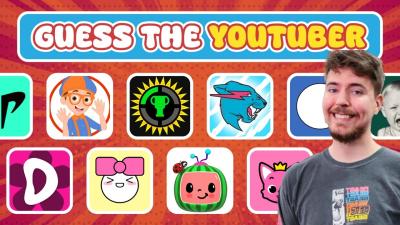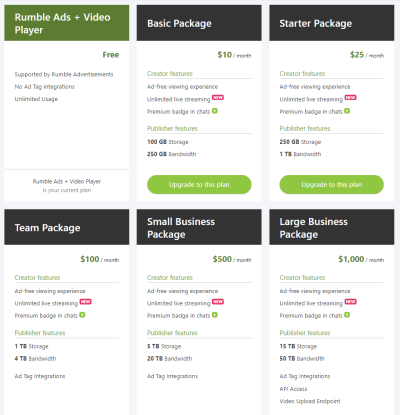Welcome to your comprehensive guide on purchasing Getty Images! If you're diving into the world of stock photography, you’ve probably heard of Getty Images. It’s one of the largest and most reputable stock image providers in the game. With millions of high-quality images, videos, and music available, Getty is a go-to resource for creatives. Understanding how to navigate their offerings and licensing is crucial for any project, whether it’s for commercial use, personal projects, or social media. Let’s explore why
Why Choose Getty Images for Your Projects

When it comes to finding the right visuals for your projects, choosing Getty Images has some serious advantages. Here are a few compelling reasons:
- Diverse Selection: Getty offers a vast library of over 200 million assets. Whether you need stunning landscapes, vibrant lifestyle shots, or professional portraits, you can find it all here.
- Quality and Professionalism: Each image undergoes a strict vetting process. You can count on high resolution and professional quality that enhances your project’s aesthetic.
- Exclusive Content: Getty Images frequently collaborates with renowned photographers and artists. This means you can access exclusive content that isn’t available anywhere else.
- Easy Search Features: Their search functionality is user-friendly, allowing you to filter by orientation, color, and even mood. Finding the perfect image has never been easier!
But that’s not all. Let’s break down a few more reasons to consider Getty for your creative endeavors:
Licensing Made Simple
One of the biggest hurdles in using stock images is understanding licensing. Getty Images provides clear licensing options, including:
| License Type | Description | Use Cases |
|---|---|---|
| Royalty-Free | Pay once, use multiple times without additional fees. | Websites, presentations, social media posts. |
| Rights-Managed | Licenses are exclusive to specific projects and usage. | Print ads, billboards, corporate branding. |
| Editorial Use | Images can be used for news or educational purposes. | Magazines, blogs, news articles. |
This clarity allows you to choose the right images without worrying about potential legal issues down the line. It’s all about empowering you to use their content confidently!
In summary, Getty Images is a fantastic resource for anyone needing high-quality visuals. Its diverse selection, professional quality, and straightforward licensing make it a top choice for creatives across various industries. So, whether you’re designing a blog, creating marketing materials, or looking for the perfect image for a presentation, Getty Images has got you covered!
Also Read This: Selling photos online: A complete Beginner’s Guide to Selling Photos Online
3. Types of Images Available on Getty Images
When it comes to visual content, Getty Images is like a treasure trove. They offer a vast array of images that cater to almost every need, whether you're working on a marketing campaign, a blog post, or a corporate presentation. Here’s a breakdown of the main types of images you can find:
- Stock Photos: These are the most common type of images available. You can find anything from landscapes to lifestyle shots. Stock photos are perfect for general use, and they often come with a variety of licensing options.
- Editorial Images: If you need images that depict current events or cultural moments, editorial images are your go-to. These images are used in news articles, blogs, and other platforms to convey real-life situations.
- Illustrations: Sometimes, a photograph isn’t enough. That’s where illustrations come in! Getty offers a range of artistic images that can add a unique flair to your project, from infographics to whimsical drawings.
- Vectors: Ideal for graphic designers, vector images can be scaled without losing quality. These are perfect for logos, icons, and other design elements that require flexibility.
- Videos: Not just photos anymore! Getty also has a robust collection of stock videos, from short clips to longer sequences, which can enhance your storytelling.
- Music: Yes, Getty Images even has a selection of licensed music tracks that can accompany your visual content. This is particularly useful for video projects.
Choosing the right type of image depends on your project's needs. For instance, if you’re creating a blog post about travel, stock photos of destinations would be ideal. On the other hand, for a news article, you might want to use editorial images that capture real events. The variety offered allows for creativity and flexibility in your projects!
Also Read This: Does Shutterstock Accept AI-Generated Images? Exploring the Submission Criteria
4. Steps to Purchase Images from Getty
Ready to buy an image from Getty? Don’t worry; the process is straightforward! Here’s a step-by-step guide to help you navigate through the purchasing journey:
- Search for Images: Use the search bar on the Getty Images homepage. Enter keywords related to the image you’re looking for, and use filters to narrow down your options. You can filter by image type, orientation, or even color.
- Select Your Image: Once you find an image you love, click on it. This will take you to a page with more details about the image, including licensing options and pricing.
- Choose a License: Getty Images offers various licensing options, including Royalty-Free and Rights-Managed. Read the descriptions carefully to understand what each license entails. Select the one that fits your project’s requirements.
- Add to Cart: After selecting the license, click on the “Add to Cart” button. You can continue shopping for more images or proceed to checkout.
- Sign In or Create an Account: If you’re not already logged in, you’ll need to sign in or create an account. This helps manage your purchases and downloads.
- Checkout: Review your cart and proceed to checkout. You’ll need to input your payment information. Getty accepts various payment methods, so choose what’s most convenient for you.
- Download Your Image: Once the payment is processed, you’ll receive a confirmation email. You can then go back to your account to download your purchased images. Make sure to save them in your project folder!
And there you have it! With these steps, you’re well on your way to finding and purchasing the perfect images for your projects. Whether it’s for a blog, a social media campaign, or an advertisement, Getty Images makes it easy to access high-quality visuals.
Also Read This: Simplifying Image Downloading with the Best 123RF Images Downloader
5. Understanding Licensing Options
When you're diving into the world of stock photography, especially with Getty Images, the first thing to wrap your head around is the licensing options available. Getty offers a variety of licenses, each designed to cater to different needs and uses. Let’s break them down!
1. Rights Managed (RM)
This option is more traditional and specific. Rights Managed images are licensed for a specific use, duration, and geographic area. This means that if you want to use a particular image for an advertisement, you need to specify how long you'll be using it and where it will appear. The great thing about RM is that it gives you exclusivity for that particular use, but it also requires more careful planning on your part.
2. Royalty Free (RF)
Royalty Free images offer a bit more flexibility. You pay a one-time fee for the image, and once you have it, you can use it in multiple projects without any additional costs. However, it’s essential to check the terms, as there might be limitations on how the image can be used (e.g., not for resale).
3. Editorial Use
Images licensed for editorial use can’t be used for commercial purposes. These are typically used in news articles, blogs, or any content where the primary goal is to inform rather than sell. If you’re creating content that aims to educate or report, this is the way to go!
When selecting an image, consider not just the licensing type but also the usage rights, distribution methods, and the duration for which you need the image. Always read through the license agreement carefully to avoid any surprises down the road.
Also Read This: Adobe Stock Alternatives: Exploring Other Stock Photography Platforms
6. Best Practices for Using Licensed Images
Now that you’ve navigated the licensing options, it’s time to talk about best practices for using licensed images effectively. After all, you don’t want to just slap an image on your project and call it a day. Here are some tips to keep in mind:
- Read the License Agreement Thoroughly: Before downloading any image, ensure you understand the rights you’re purchasing. This includes how you can use the image, any restrictions, and what happens if you want to use it in a different way later on.
- Keep Records: Maintain a record of all purchased licenses. This can save you from potential legal issues and help you track your image usage, especially for large projects.
- Use High-Quality Images: Always opt for high-resolution images to ensure your project looks professional. Low-quality images can undermine the quality of your work.
- Avoid Alterations: Respect the integrity of the image by avoiding excessive alterations unless you have the rights to modify it. Some licenses may restrict significant changes.
- Give Credit When Necessary: Some licenses may require crediting the photographer or the source. Even when it’s not required, giving credit can be a nice gesture that supports artists.
- Be Mindful of Trends: Stock photos can sometimes feel overused. To make your work stand out, try to select images that are less common or consider creative ways to incorporate them into your designs.
By following these best practices, you can ensure that your projects not only look great but also comply with legal standards. Images are a powerful tool in storytelling, and using them responsibly will enhance your credibility and creativity!
Also Read This: How to Get Photos from Getty Images: A Guide to Legal Access and Usage
7. Common Mistakes to Avoid When Purchasing Images
When it comes to purchasing images from Getty, it’s easy to make a few missteps that could lead to frustration down the line. Here are some common pitfalls to avoid:
- Ignoring Licensing Details: One of the biggest mistakes is not fully understanding the licensing agreements. Each image comes with specific usage rights—whether for commercial or editorial use. Always read the fine print!
- Choosing the Wrong Size: Selecting an image in the wrong resolution can be costly. If you’re planning to print, make sure to choose a high-resolution image. For web use, a smaller size is often sufficient.
- Overlooking Model Releases: If you’re using images featuring people, ensure that the image has a model release. This protects you from potential legal issues down the line.
- Neglecting to Test Images: Before making a purchase, test how the image looks in your design. Some images may not translate well to your specific project. Take advantage of lightboxes or previews.
- Forgetting About Budget: Getty offers a wide range of prices. It’s easy to get carried away, so set a budget beforehand and stick to it!
- Assuming Everything is Royalty-Free: Not all images on Getty are royalty-free. Be clear on what you’re purchasing. Misunderstanding this could lead to unexpected fees or restrictions.
By being aware of these mistakes, you can save time, money, and headaches in your image purchasing journey. Remember, a little preparation goes a long way in avoiding these common traps!
8. Conclusion and Final Tips
Purchasing images from Getty can be a straightforward process if you arm yourself with the right knowledge and tools. As we wrap up our guide, let’s summarize some final tips to enhance your experience:
- Do Your Research: Spend some time familiarizing yourself with Getty’s catalog. This can help you understand the range of images available and find the perfect fit for your project.
- Utilize Keywords Wisely: When searching for images, use specific keywords that describe what you’re looking for. Think about synonyms and related terms to broaden your search.
- Consider Subscription Plans: If you’ll be purchasing images frequently, look into Getty’s subscription options. These can save you significant money over time.
- Keep a Project Folder: Organize your downloaded images in folders by project. This will streamline your workflow and make it easier to locate assets when you need them.
- Stay Updated: Follow Getty on social media or subscribe to their newsletters. They often showcase new collections and offer promotions that you won’t want to miss!
In conclusion, whether you’re a designer, marketer, or content creator, understanding how to navigate Getty Images effectively can greatly enhance your projects. With the right approach, you can find stunning visuals that elevate your work while staying compliant with licensing agreements. Happy image hunting!
 admin
admin








